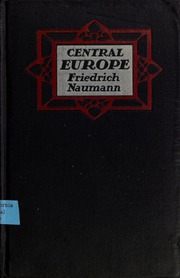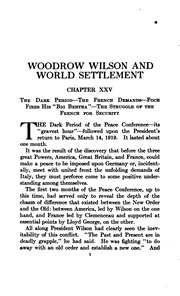Much like the What are you Watching or Playing Threads in their respective forums, this one is for books you're reading and because I don't want to forget the books in my borrowing history. 
I had a lot of trouble reading or finishing books until I decided to just read them at work on breaks, since I'm not the type of person to just "read" a book in my more appropriate freetime. With that change I've been burning through books far more rapidly (albeit still probably slowly) compared to many.
So here are some of the books I've read over the past few months. I don't read much fiction, so... it's mostly history stuff.
Judgment at Appomattox by Ralph Peters. It's a historical novel about the American Civil War, the fifth book of his in this vein starting with Cain at Gettysburg and continuing on with books about the Grant's 1864 Overland Campaign, Sheridan's 1864 Valley Campaign, the Siege of Petersburg and finishing off with this book. I LOVE all of these novels and think they are just as good as the more famous works such as The Killer Angels by Michael Shaara and his son Jeff's books of which I've read A Blaze of Glory and A Chain of Thunder which were about Shiloh and the Vicksburg Campaign respectively. Ralph Peters' is an amazing writer and he really brings the characters to life, showing how great leaders and tacticians can still have mortal flaws and personality quirks, the conflicts of ego and personality between individuals and most importantly that stood out to me, how damning the 'fog of war' actually is. I'd recommend all of Ralph Peters' books about the Civil War, they're the best novels I've seen telling the story of the conflict and gives really interesting insight on Commanders like Meade and Sheridan, or Gordon and Pickett etc.
Another good book I read was Conquerors: How Portugal Forged the First Global Empire by Roger Crowley and talks about how through the 15th century, Portugal's explorations down the West African coast eventually led them to the Indian Ocean, Indian and even far beyond to the Spice Islands (such as Malacca) and even China. It's a nonfiction book but does an amazing job shedding light on characters beyond the very famous Vasca Da Gama. It talks about other amazing and just as accomplished explorers, mariners and most importantly conquerors. Pedro Cabral, Francisco de Almeida, and Afonso de Albuquerque. Of how a few hundred men with some exceptional ships managed to contest against the powerful Muslim and Hindu factions they discovered. Their stories are perhaps even more exemplary then that of the Spanish Conquistadors and there's so much random trivia and interesting facts that I learned or was expanded on. Like how resilient Chinese Junks were to Caraval cannons, the Venetians trying to scheme with the Mamluks against the Portuguese, how for years the Portuguese assumed the native Hindus were actually Christians relating to the legend of Prester John and this was only dismissed when they met the actual Christians of India, the deadly poison darts and arrows of Indian forces, and folks like Portuguese who went turncoat and joined the local Muslim forces or how the Portuguese tried to rule their new populations etc etc.
I had a lot of trouble reading or finishing books until I decided to just read them at work on breaks, since I'm not the type of person to just "read" a book in my more appropriate freetime. With that change I've been burning through books far more rapidly (albeit still probably slowly) compared to many.
So here are some of the books I've read over the past few months. I don't read much fiction, so... it's mostly history stuff.
Judgment at Appomattox by Ralph Peters. It's a historical novel about the American Civil War, the fifth book of his in this vein starting with Cain at Gettysburg and continuing on with books about the Grant's 1864 Overland Campaign, Sheridan's 1864 Valley Campaign, the Siege of Petersburg and finishing off with this book. I LOVE all of these novels and think they are just as good as the more famous works such as The Killer Angels by Michael Shaara and his son Jeff's books of which I've read A Blaze of Glory and A Chain of Thunder which were about Shiloh and the Vicksburg Campaign respectively. Ralph Peters' is an amazing writer and he really brings the characters to life, showing how great leaders and tacticians can still have mortal flaws and personality quirks, the conflicts of ego and personality between individuals and most importantly that stood out to me, how damning the 'fog of war' actually is. I'd recommend all of Ralph Peters' books about the Civil War, they're the best novels I've seen telling the story of the conflict and gives really interesting insight on Commanders like Meade and Sheridan, or Gordon and Pickett etc.
Another good book I read was Conquerors: How Portugal Forged the First Global Empire by Roger Crowley and talks about how through the 15th century, Portugal's explorations down the West African coast eventually led them to the Indian Ocean, Indian and even far beyond to the Spice Islands (such as Malacca) and even China. It's a nonfiction book but does an amazing job shedding light on characters beyond the very famous Vasca Da Gama. It talks about other amazing and just as accomplished explorers, mariners and most importantly conquerors. Pedro Cabral, Francisco de Almeida, and Afonso de Albuquerque. Of how a few hundred men with some exceptional ships managed to contest against the powerful Muslim and Hindu factions they discovered. Their stories are perhaps even more exemplary then that of the Spanish Conquistadors and there's so much random trivia and interesting facts that I learned or was expanded on. Like how resilient Chinese Junks were to Caraval cannons, the Venetians trying to scheme with the Mamluks against the Portuguese, how for years the Portuguese assumed the native Hindus were actually Christians relating to the legend of Prester John and this was only dismissed when they met the actual Christians of India, the deadly poison darts and arrows of Indian forces, and folks like Portuguese who went turncoat and joined the local Muslim forces or how the Portuguese tried to rule their new populations etc etc.



















